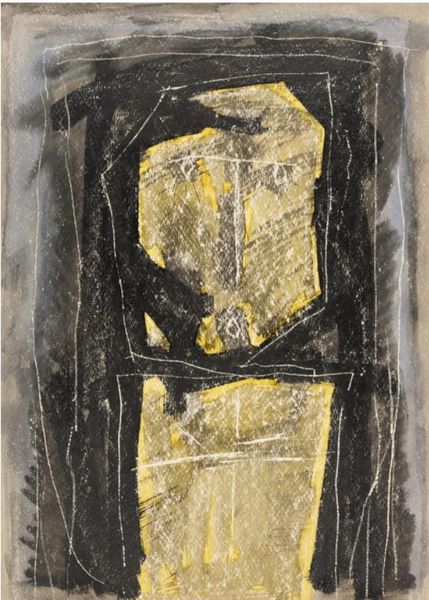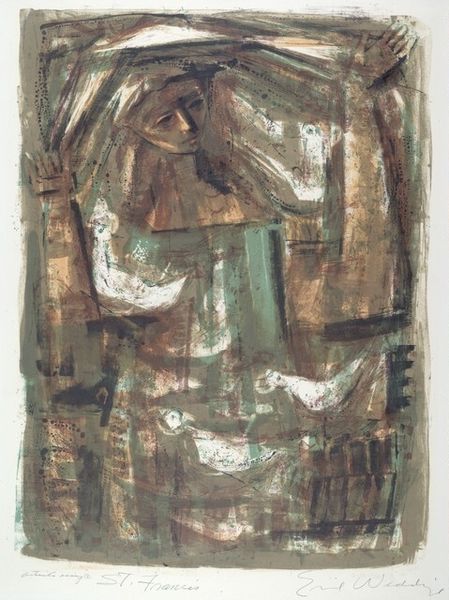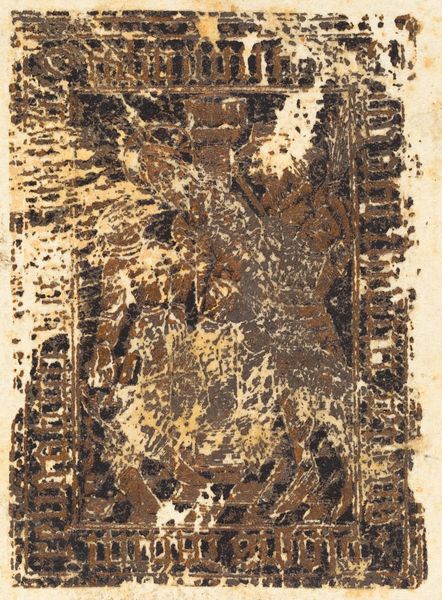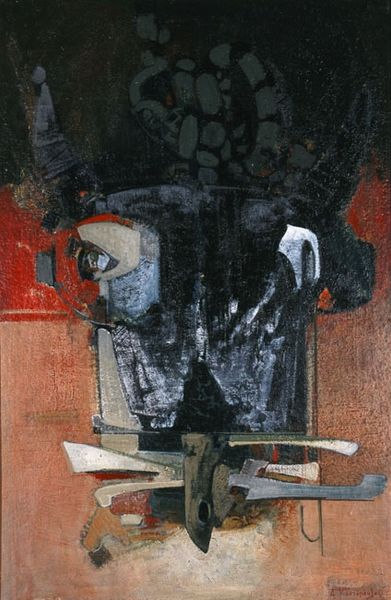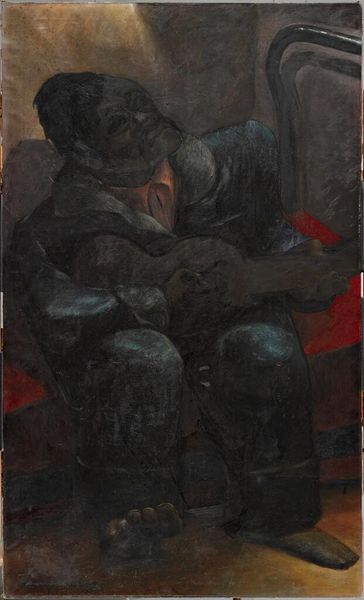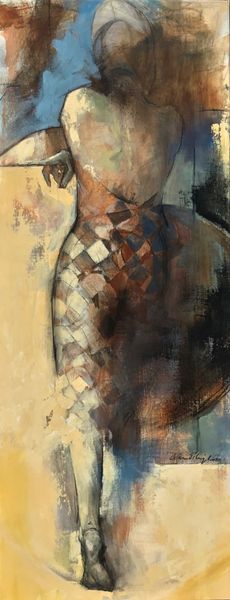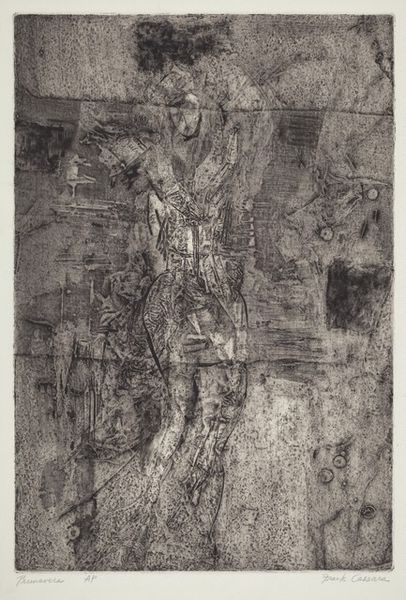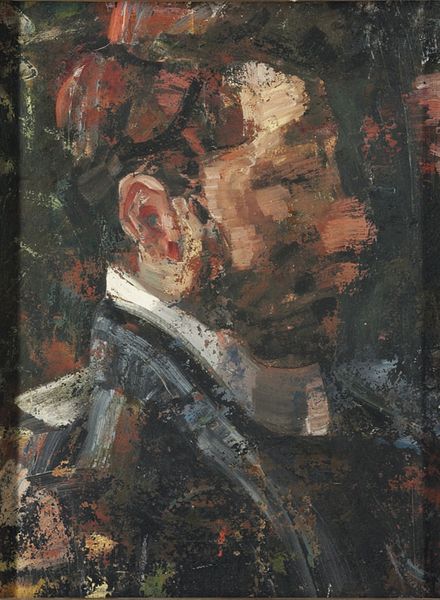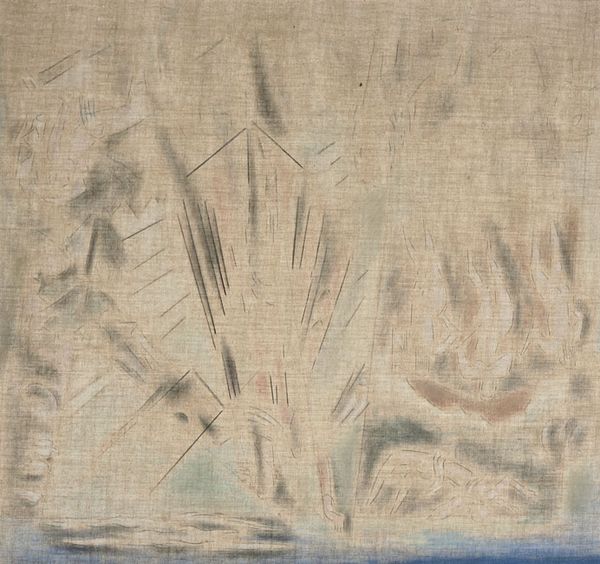
painting, oil-paint
#
abstract painting
#
painting
#
oil-paint
#
form
#
oil painting
#
matter-painting
#
abstraction
Copyright: Sorin Dumitrescu,Fair Use
Curator: This is an untitled oil painting by Sorin Dumitrescu. What catches your eye? Editor: There's something monumental, almost architectural about it. It's rough, fragmented, like a crumbling facade but rendered with deliberate strokes. The neutral background really amplifies the weight and depth of the central form. Curator: Indeed. Abstraction is often concerned with revealing universal forms and hidden structures. Think about the historical context - could the monumentality you perceive reflect anxieties around power structures after periods of societal upheaval in his native Romania? Editor: It very well could. Dumitrescu's emphasis on shape might signify deconstruction rather than celebration of traditional forms. Perhaps he is reimagining these forms through the lens of post-war reconstruction, not as literal rebuilding but a complete upheaval of former regimes. Curator: His style seems rooted in materiality; he builds his forms by layering dense colors. It's as if the symbols are trying to emerge from a more fundamental chaos. Editor: That fragmentation interests me – what stories are buried within these cracks and fissures? Does this dismantling serve as a statement on totalitarian ideals being exposed through destruction? This isn't merely aesthetic, this is a political act! Curator: You could interpret the artist's process of addition and subtraction in that light. This also ties into philosophical discussions around the definition of truth, with many post-war philosophers stating there is no objective truth, that the world is constructed on subjective experiences. The artwork embodies this! Editor: This dialogue between control and freedom, intention and chance…I’m particularly drawn to his color palette, primarily muted browns and greys—it communicates not only decay but also something about the search for beauty within devastation. This reflects the raw reality that many populations from oppressed groups continue to live under. Curator: His use of form here hints to our subconscious tendency to discover structures even in chaotic or unclear forms; his focus on 'matter-painting' becomes an exploration of psychology as much as aesthetics. It offers a reflective surface to consider individual and collective stories, buried and emerging. Editor: Looking at it, one leaves with an understanding about resilience after collective trauma. Dumitrescu’s abstract forms convey both violence and resistance by simply capturing their physical expression. It resonates today. Curator: I see it, it becomes a meditative process – reflecting on form as a means of accessing memories or contemplating present circumstances through that lens. Editor: It reminds us art offers not only beauty but opportunities for social change; this becomes clear by just simply experiencing Dumitrescu’s deconstruction of abstract painting.
Comments
No comments
Be the first to comment and join the conversation on the ultimate creative platform.

